We are so entrenched in the bubbles of our social lives that sometimes we forget how insignificant some of the things are when put against the whole image. And while for some people this realization might be comforting, that a spilled coffee, a lost job or a loss of a relationship is just such a small fraction of things happening in the universe, for others the thought can be absolutely terrifying.
Why not take a closer look at what’s out there and compare how vast the surrounding universe is compared to our little green planet? See for yourself just how big Jupiter is compared to the North America? Or how big our sun is compared to the largest observed star? Maybe you’ll have to stop for a second and re-evaluate how you perceive everything around you!
This is, obviously, the Earth, a planet where we all currently live
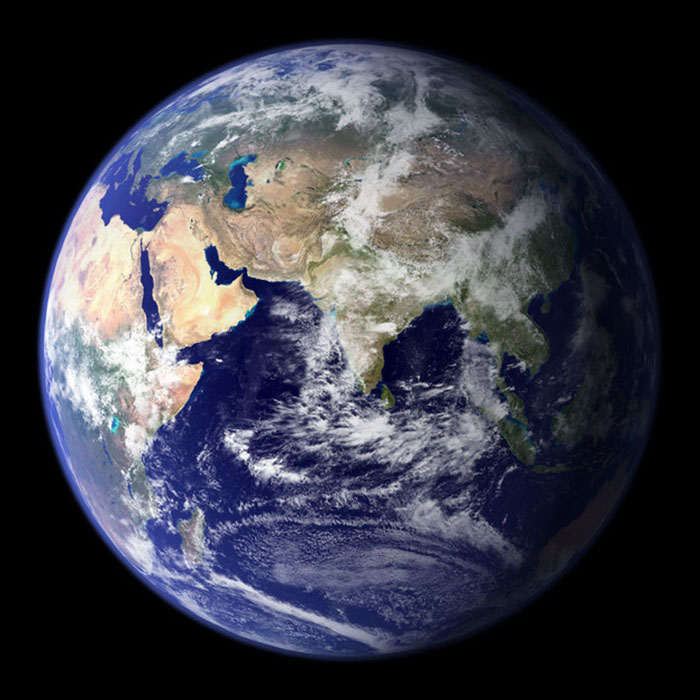
Image credits: NASA
And this is the solar system where our planet shares space with other 7
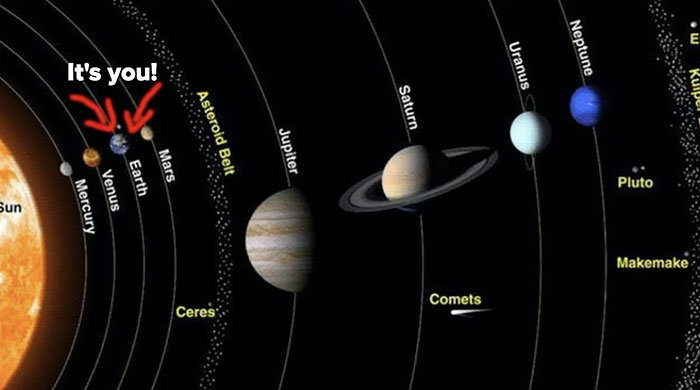
Image credits: NASA
The solar system is fascinating, with a history of not much, not little, just 4.568 billion years! It consists of a single star (Sun, duh!), 8 planets (Mercury, Venus, Earth, Mars,
Jupiter, Saturn, Uranus, Neptune) and 3 universally accepted dwarf planets (Ceres, Pluto, Eris). Oh, and everything in between, such as moons and asteroids and such. The system mass of the solar system is 1.0014 solar masses (one solar mass is equal to approximately 2×1030 kg, do the calculations) and the majority of the system’s mass is in the Sun (99,86 %) with the remaining majority contained in Jupiter.
This is how far away (to scale) the Moon is from the Earth which doesn’t seem as much
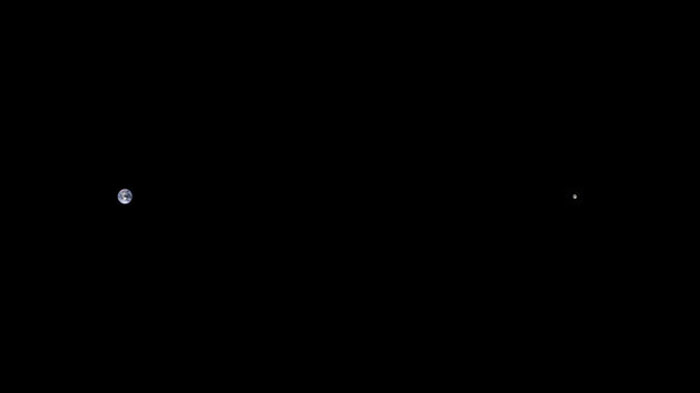
Image credits: Nickshanks
However, you can fit every planet in the solar system in that gap. Quite cool, huh?
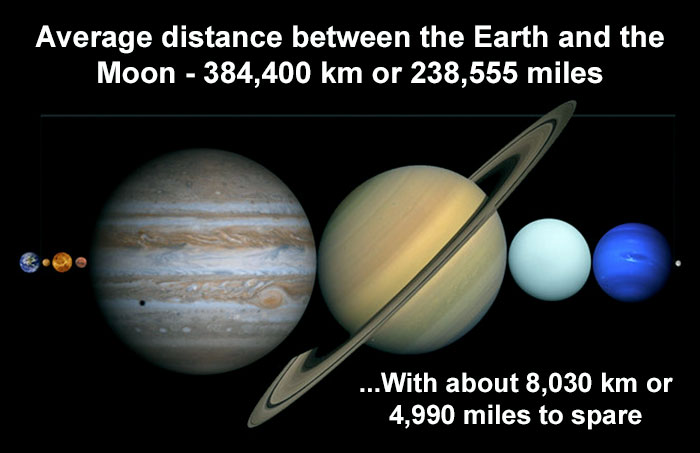
Image credits: reddit
Jupiter is our giant of the solar system. It is so big that the entire continent of North America looks like a green speck on it
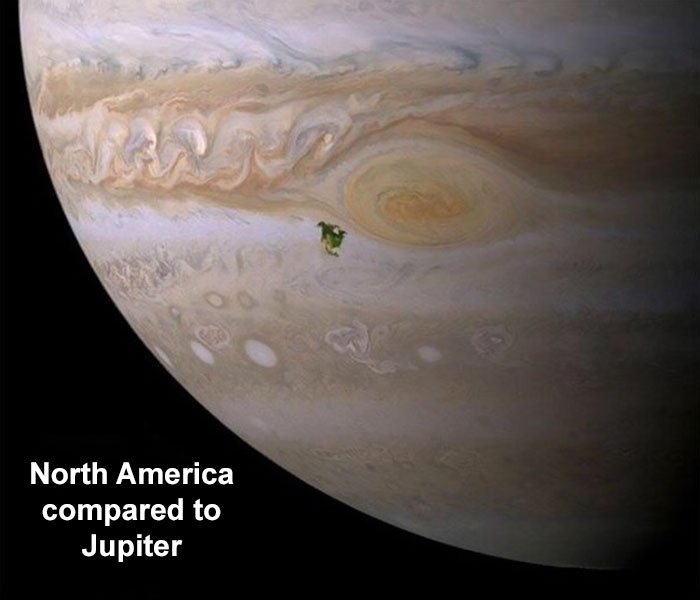
Image credits: John Brady/Astronomy Central
Jupiter is the largest planet in our solar system. Named after the Roman god of sky and lightning, Jupiter is a planet with a radius of 69,911 km (43,441 mi) and a surface area of 6.1419×1010 km2 (2.3714×1010 sq mi) which would be approximately 122 Earths. Now that’s impressive! Unlike planets like Earth and Mars (that have rocky, terrestrial terrains), Jupiter is a gas giant, meaning that it consists mainly of hydrogen and helium for which it is sometimes called a failed star (because they contain the same basic elements of a star). When compared to the sun, the planet seems like a meek little bubble as its mass is only one-thousandth that of the Sun, however if you combined the masses of the remaining solar system planets, Jupiter would still be two-and-a-half times bigger.
Another big body is Saturn. Here you can see how big it is compared to Earth (or 6 of them)
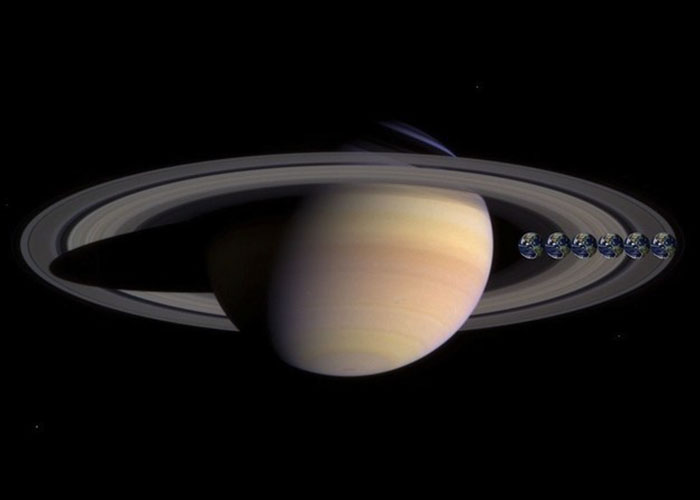
Image credits: John Brady/Astronomy Central
If Saturn’s rings were placed around Earth, here’s how they would look
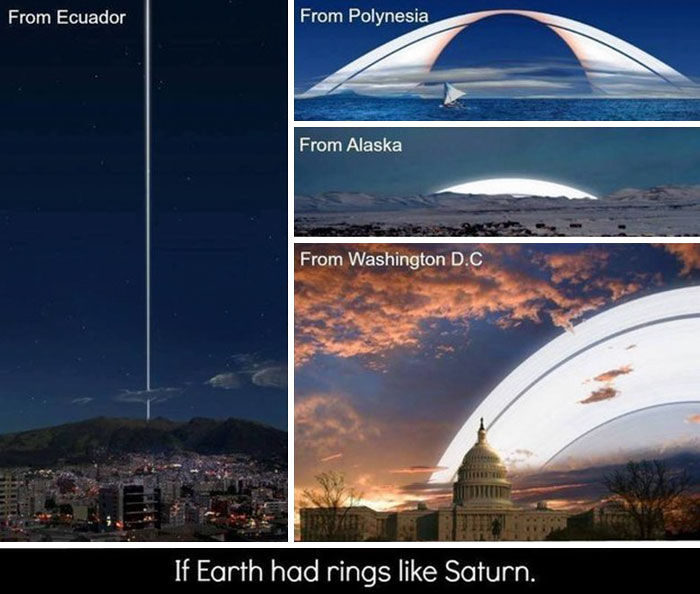
Image credits: Ron Miller
Our observation of other objects in the universe have improved quite a bit, and these images of Pluto are a good example
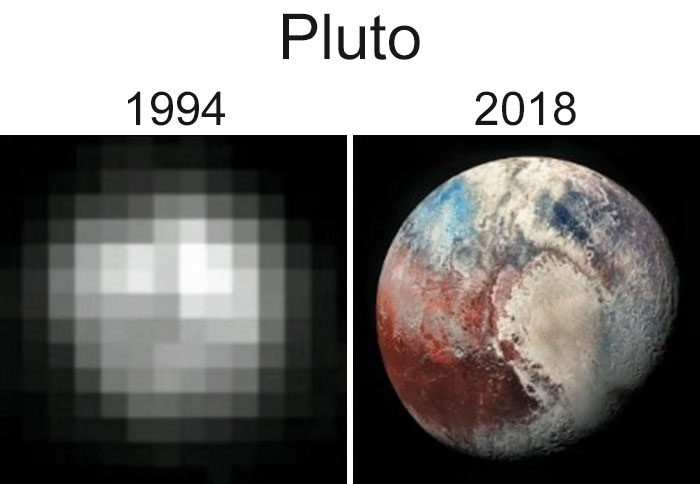
Image credits: NASA
Ah, the heartbreak of a century, first called a planet and then being stripped of the title and reclassified as a dwarf. Even though it happened back in 2006, there are still people who are upset over the International Astronomical Union’s decision to define the term ‘planet’ which led to Pluto being excluded. In classic mythology, Pluto is the god of the afterlife and the ruler of the underworld. Despite it not being a planet anymore, people still sought to reach it and in 2015 The New Horizons spacecraft became the first probe to perform a flyby of Pluto. It took almost a year for the spacecraft to send back the collected information, but it was so so worth it.
Here’s how an artist imagined Rosetta’s Comet (67P/Churyumov–Gerasimenko) would look like compared to the size of downtown Los Angeles. Makes you think about those end-of-the-world movies, no?
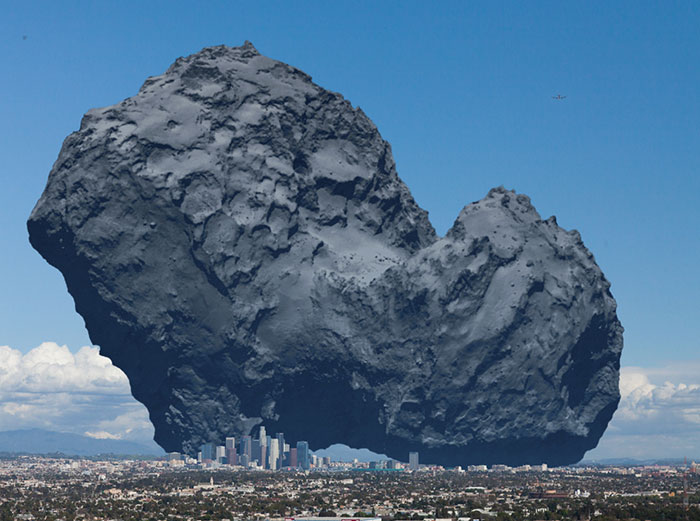
Image credits: anosmicovni
Although none of the previous objects have substance compared to our sun, a yellow dwarf star
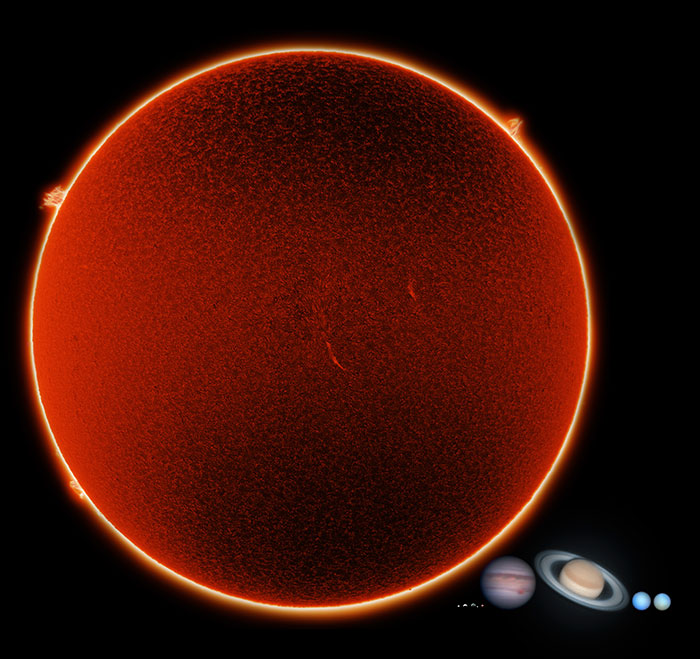
Image credits: ajamesmccarthy
Sitting at the center of our system, the Sun is a nearly-perfect sphere of hot plasma with surface area of 6.09×1012 km2 which is 12,000 Earths (just think about it for a moment!). It takes 8 min and 19 s for the light from the Sun to reach our planet. The Sun is made of ~73% hydrogen with the rest being mostly helium (~25%) and only small quantities of heavier elements, including oxygen, carbon, neon, and iron. According to Wikipedia, the Sun “currently fuses about 600 million tons of hydrogen into helium every second, converting 4 million tons of matter into energy every second as a result”. The energy (which can take 10,000 – 170,000 years to escape from its core) is the source of Sun’s light and heat. When these processes decrease, the Sun’s core will increase density and temperature and the outer layers will expand, consuming the orbits of Mercury and Venus and rendering Earth uninhabitable. But that’s not going to happen in the upcoming 5 billion years or so, nothing to worry about!
This is how Earth looks from the surface of the Moon, not too bad?
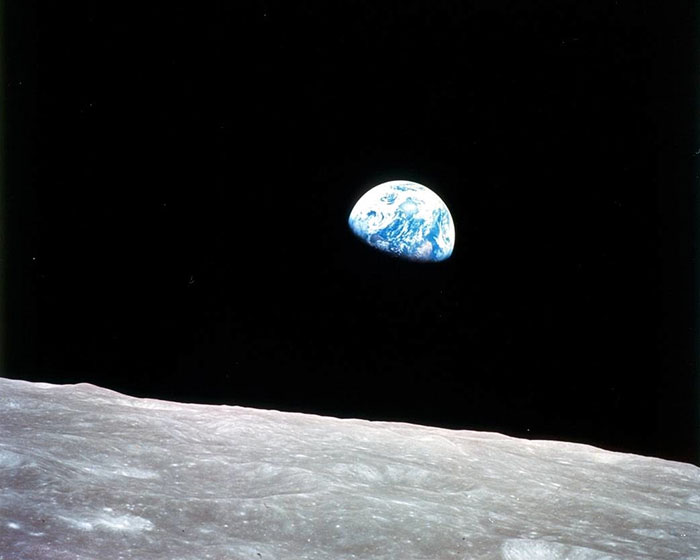
Image credits: NASA/Bill Anders
Well, Mars gives a completely different perspective to our little planet
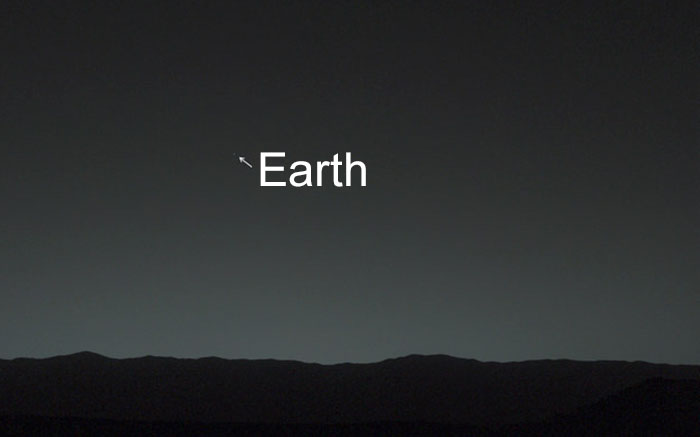
Image credits: NASA
And then there’s a view from behind Saturn’s rings, we seem like a planet for ants
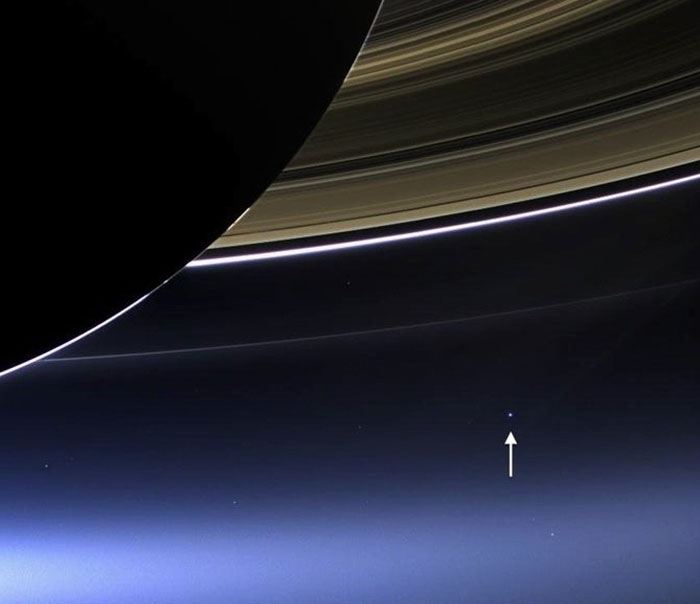
Image credits: NASA
Around 2.9 billion miles away, just beyond Neptune we seem smaller than a grain of salt
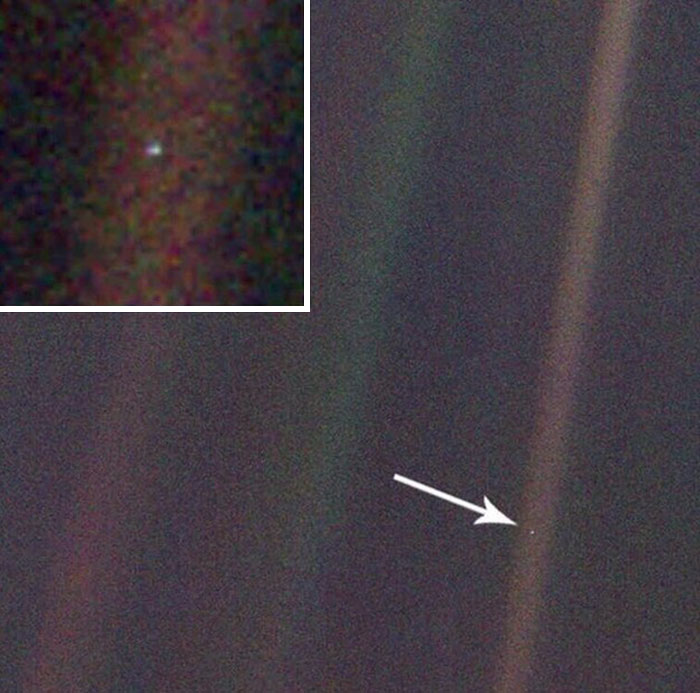
Image credits: NASA
So if that doesn’t put things into perspective, then let’s go big. This is how Earth looks compared to the Sun
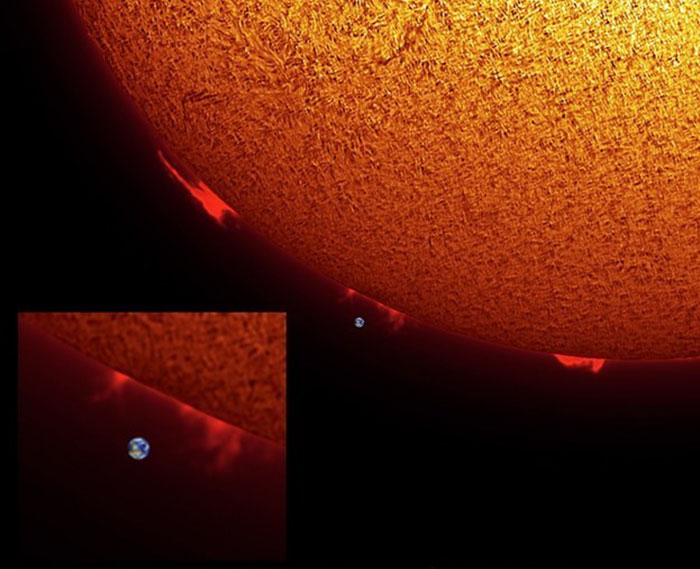
Image credits: John Brady/Astronomy Central
Though the Sun doesn’t look just as bad then looking from the surface of Mars, right?
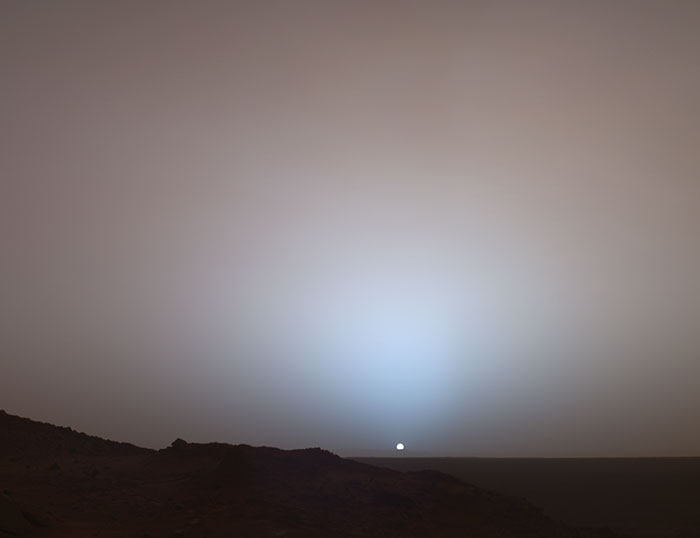
Image credits: NASA
There are so many stars in the universe that their number outweighs how many grains of sand there are on Earth’s beaches
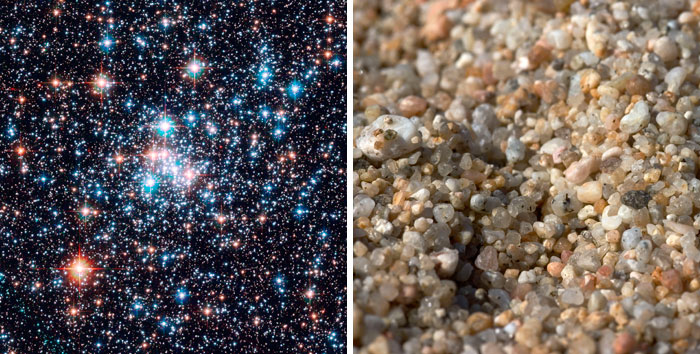
Image credits: Sean O’Flaherty
Which means that our sun is just a grain of sand in the whole picture, especially compared to such giants like VY Canis Majoris
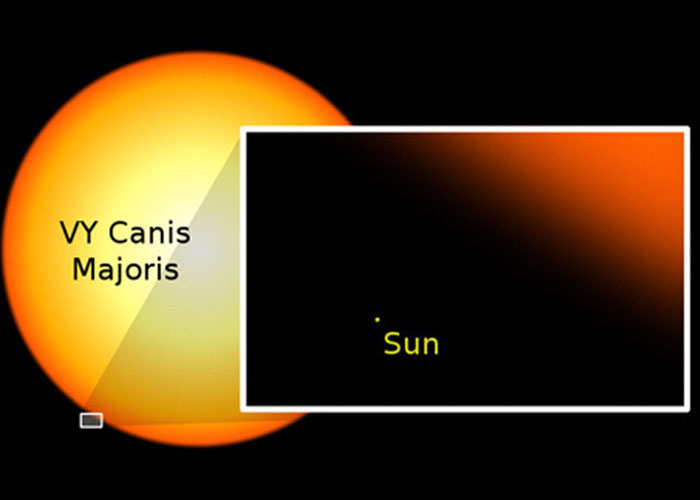
Image credits: Oona Räisänen
If VY Canis Majoris was placed in the center of our solar system it would almost reach the orbit of Saturn
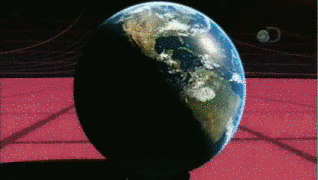
Image credits: Discovery Channel
If the Sun was scaled down to the size of a white blood cell, the Milky way would be the size of the continental United States
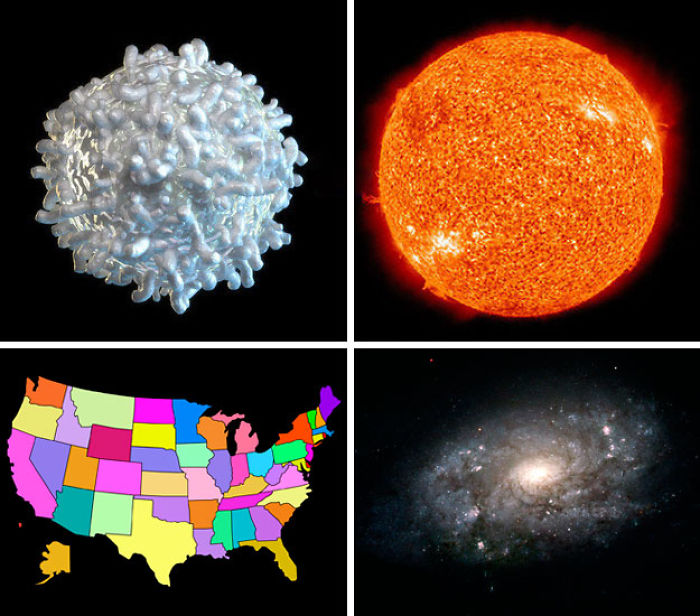
Image credits: NASA
So when you look at our galaxy from that perspective, our tiny Earth truly loses the sense of magnitude
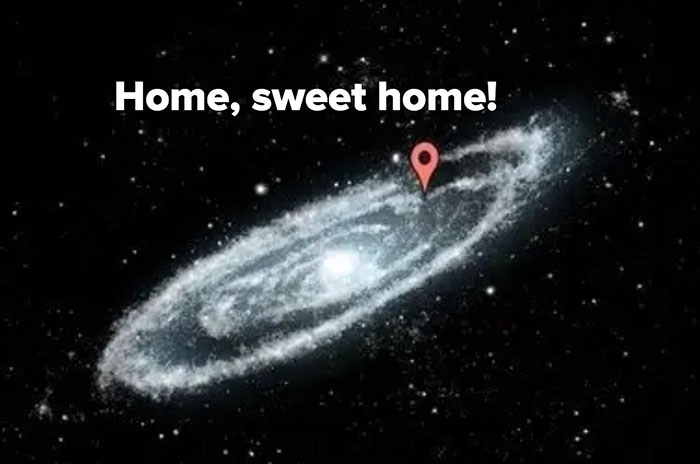
Almost all individual stars we see at night scattered all across the sky are just a fracture of what lies out there
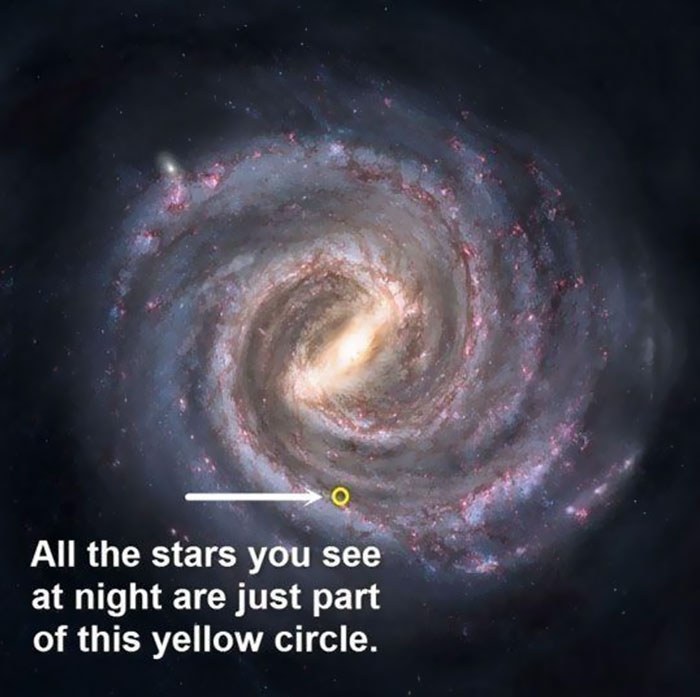
Image credits: ScienceDump
And if you thought that the Milky Way is huge, here it is next to IC 1101, which is 1.04 billion light-years away
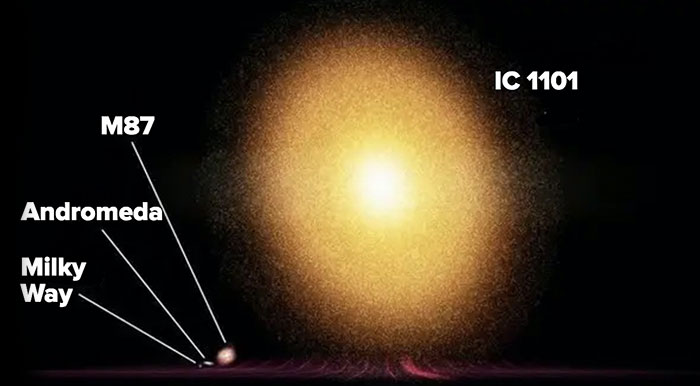
Image credits: IC 1101
To top the overwhelming vastness of universe exemplified so far, here’s a photo of thousands of galaxies taken by the Hubble Space Telescope
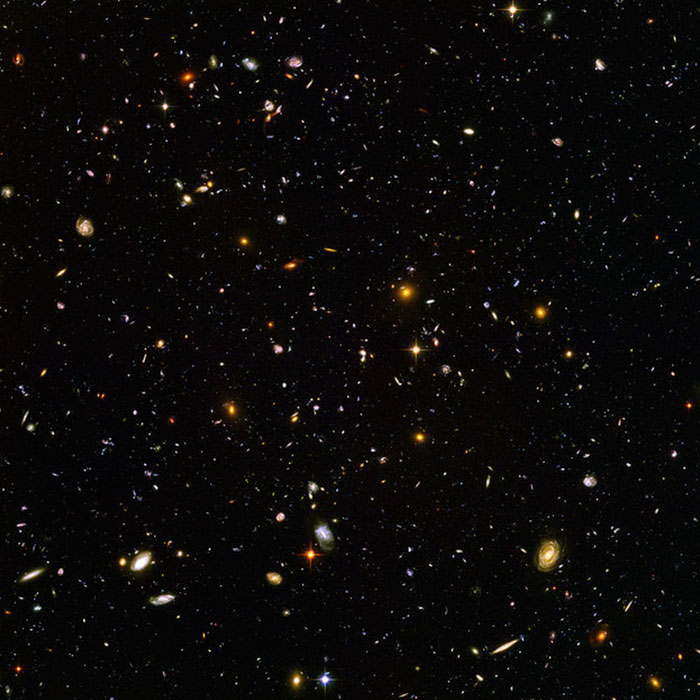
Image credits: NASA
And here’s one of them, UDF 423, 7.7 billion light-years away
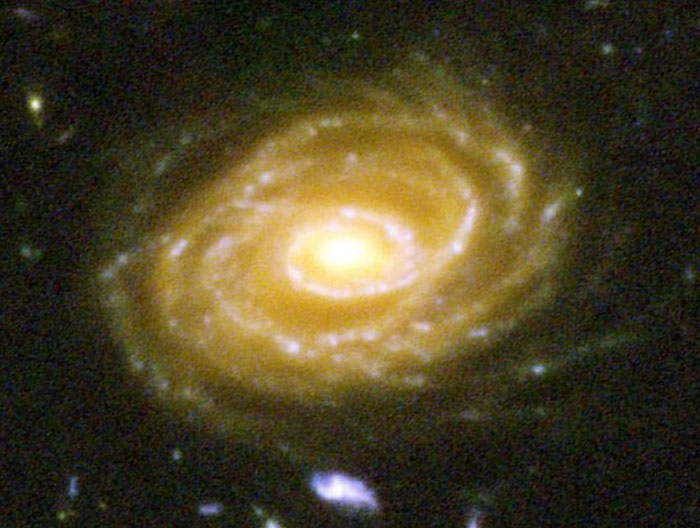
Image credits: NASA
What you see at night is just a small part of the universe
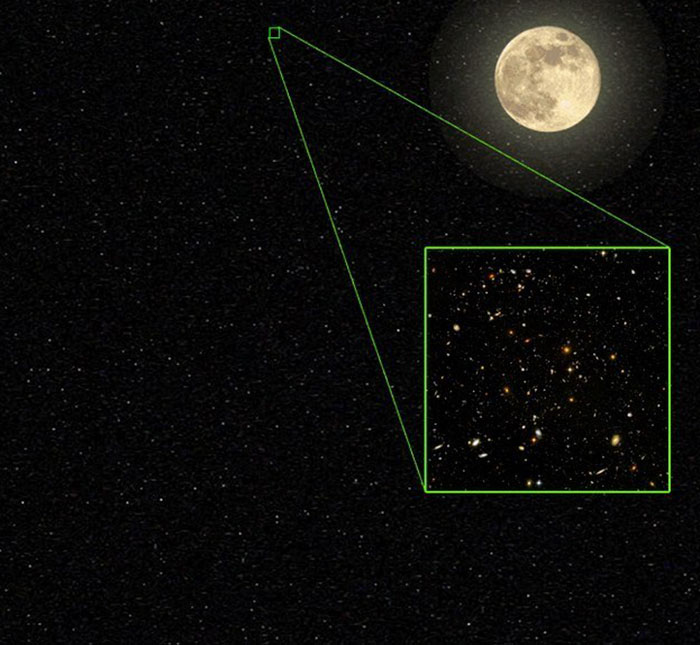
Image credits: NASA
And if you came here expecting black holes, here it is! This one’s compared to Earth’s orbit. Terrifying, isn’t it?
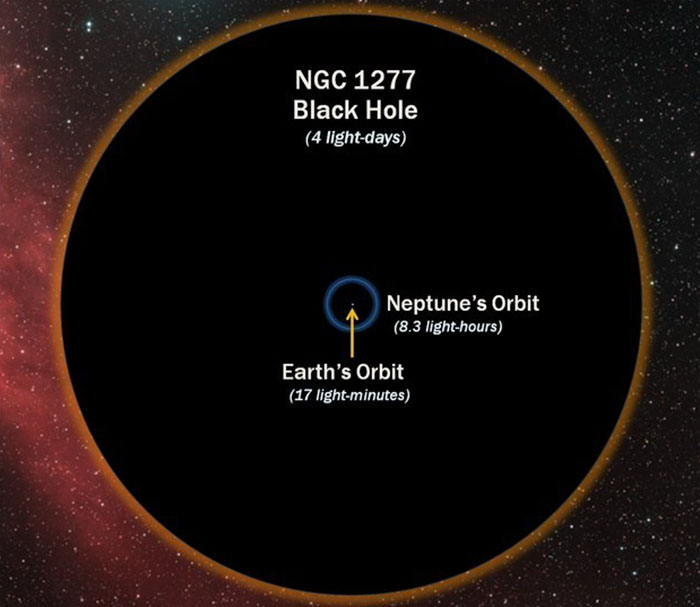
Image credits: D. Benningfield/K. Gebhardt/StarDate
by Giedrė Vaičiulaitytė via Bored Panda - Source

No comments: